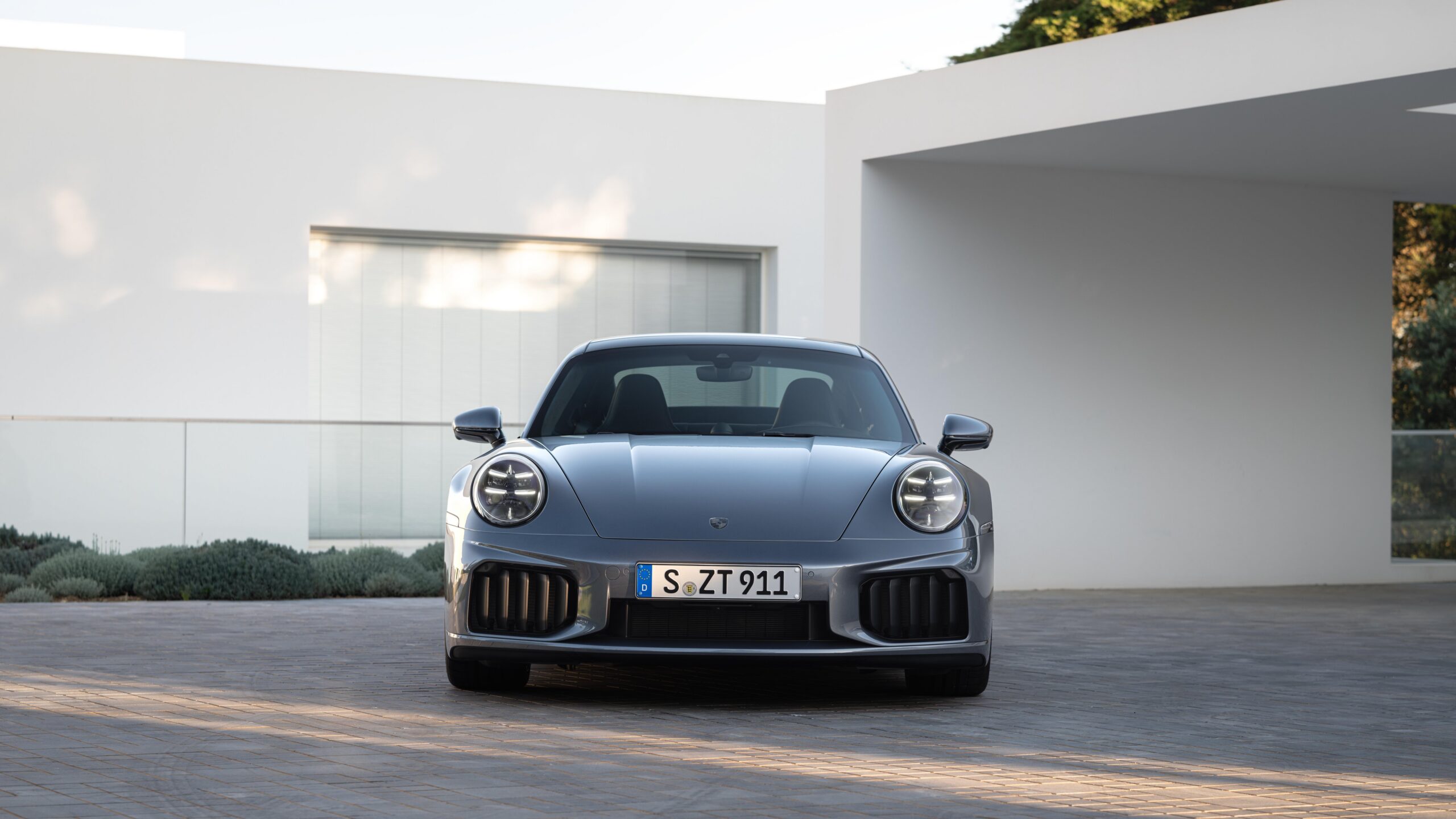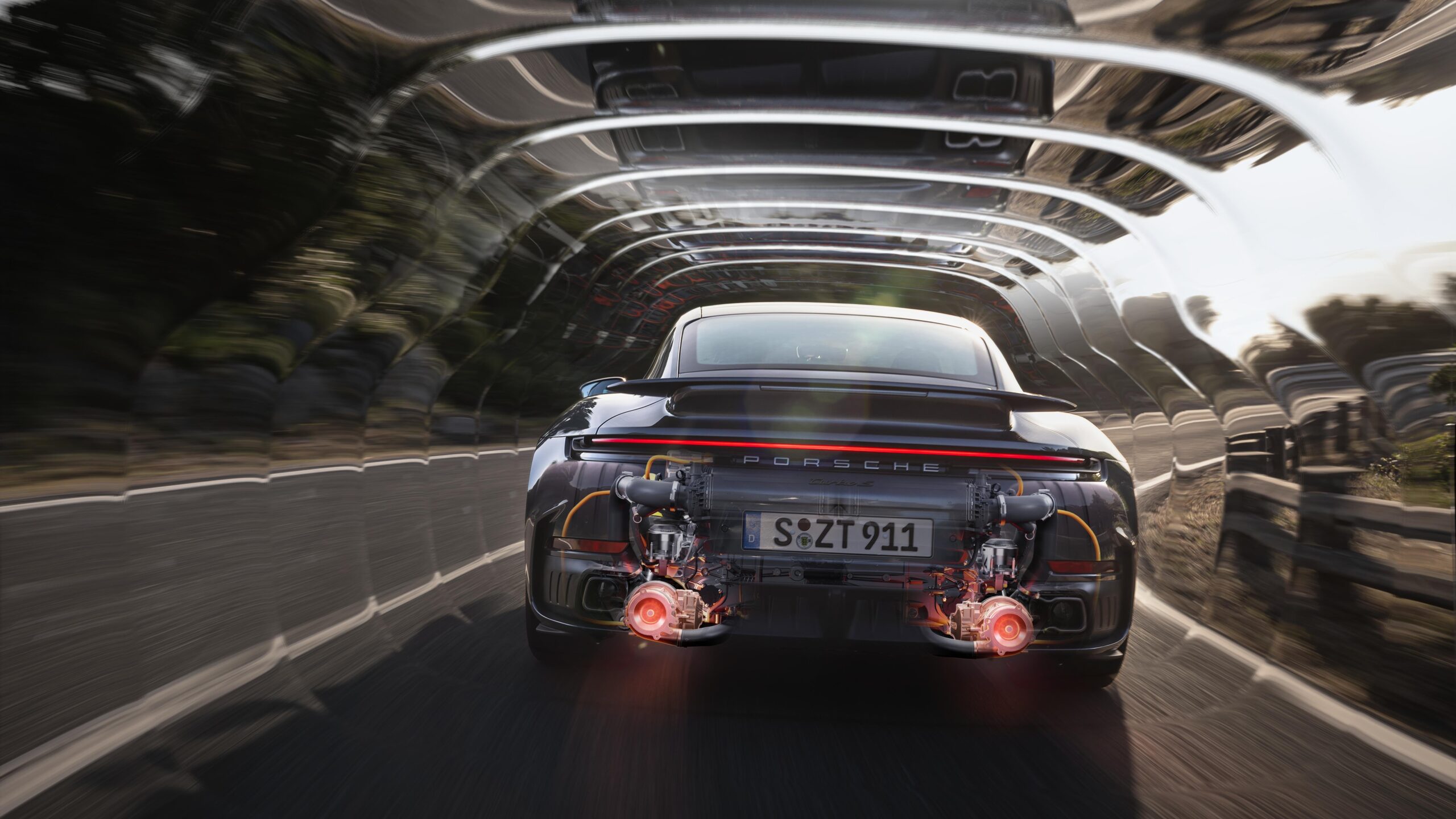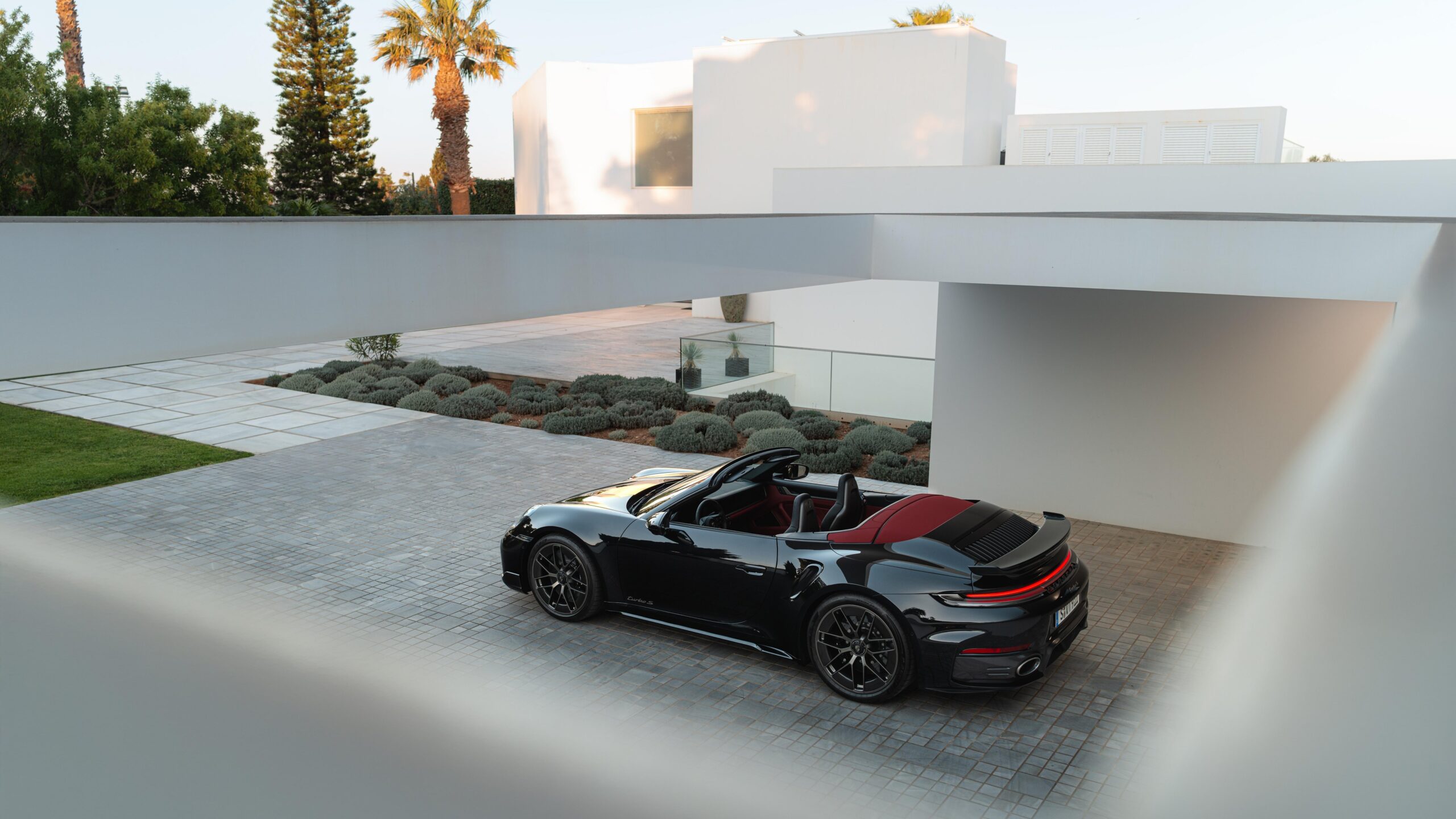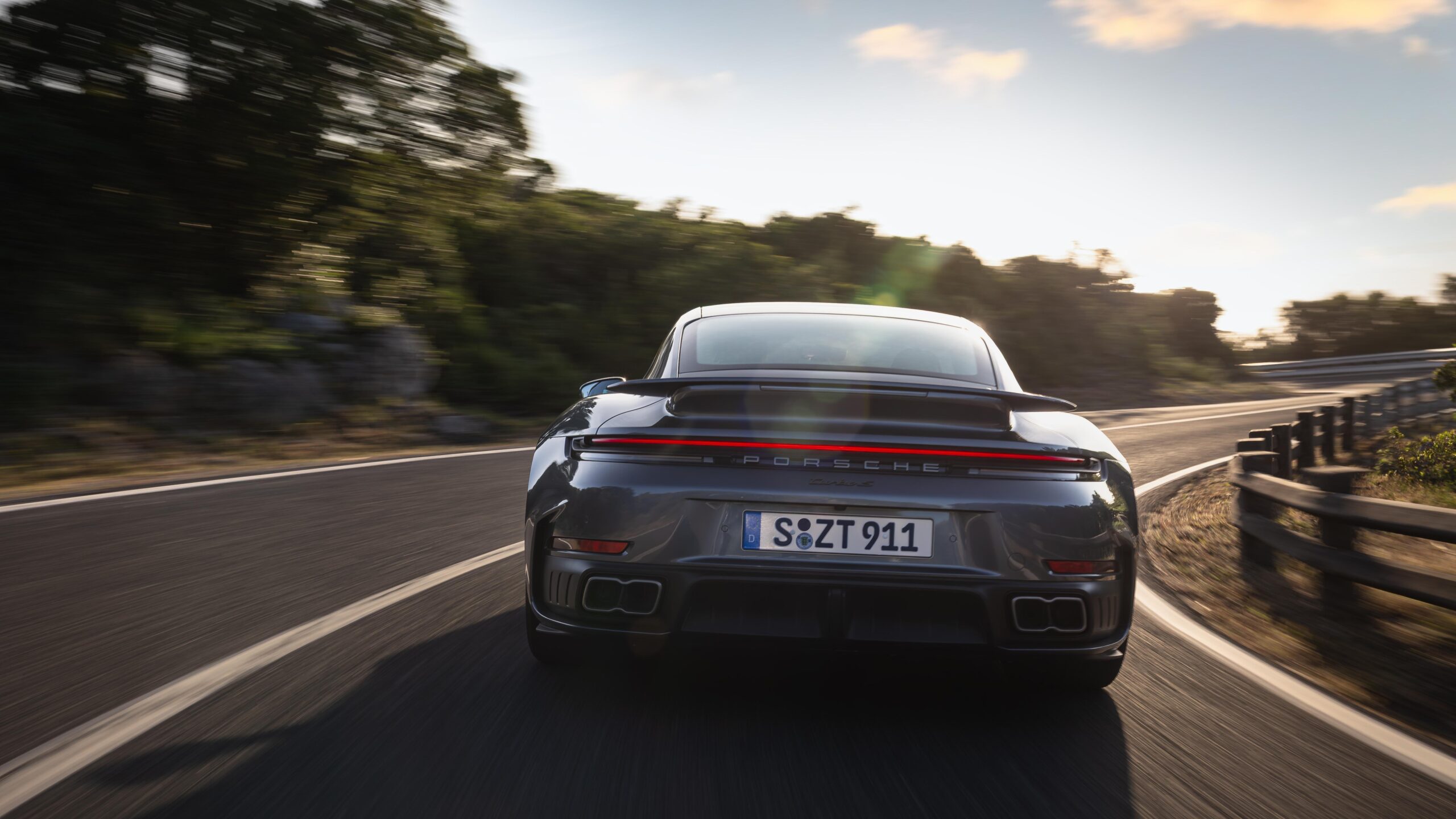Introduction: The Legend Evolves
Few cars in the world command as much respect as the Porsche 911. For over six decades, it has defined the very meaning of a sports car—blending timeless design, razor-sharp performance, and everyday usability into one cohesive package. But among all 911 variants, there is one badge that has always stood out: the 911 Turbo S. It has long been regarded as the “everyday supercar,” a machine capable of humbling exotics on the racetrack while remaining practical enough to drive daily.
In 2026, Porsche has taken this philosophy into a bold new era with the 2026 Porsche 911 Turbo S T-Hybrid. This isn’t just an incremental update. It marks the first hybridized Turbo in history, making it the most powerful and technologically advanced 911 ever produced. With a staggering 701 horsepower, a 0–60 mph time of just 2.4 seconds, and a Nürburgring lap time that’s 14 seconds quicker than its predecessor, this new Turbo S redefines what a supercar can be.
But the story goes far beyond raw numbers. The 2026 Turbo S represents a crucial turning point for Porsche, a company that has spent decades perfecting internal combustion engines and is now carefully weaving electrification into its DNA. This car is not just a machine—it’s a statement about the future of performance, where hybridization doesn’t mean compromise, but enhancement.

A Journey Through Time: The Turbo Legacy
To understand the importance of the 2026 Turbo S, we need to revisit where it all began. The Porsche 911 Turbo first appeared in 1975 as the 930 Turbo, instantly gaining notoriety as the “Widowmaker.” It was raw, turbocharged, and demanded immense skill from its drivers. Over the years, Porsche refined the Turbo formula, blending brutal performance with ever-greater sophistication.
The 993 Turbo of the 1990s brought all-wheel drive into the mix, making it far more usable. The 997 Turbo introduced variable geometry turbos, while the 991 Turbo S pushed the car firmly into the realm of supercars, with performance figures rivaling Ferraris and Lamborghinis.
The 992-generation Turbo S, launched in 2020, elevated the game again, offering 640 horsepower and blistering acceleration. Yet Porsche knew the next evolution had to embrace hybridization—not as a regulatory box-tick, but as a performance enhancer. Drawing on its success in endurance racing with the 919 Hybrid LMP1 and the ongoing 963 LMDh program, Porsche developed the T-Hybrid system. The 2026 Turbo S is the result: a culmination of decades of racing, innovation, and relentless pursuit of speed.
Exterior Design: Familiar Yet Sharper
At first glance, the 2026 911 Turbo S may seem instantly recognizable. Porsche has always been cautious with the 911’s design language, and the silhouette remains reassuringly familiar. The long hood, sloping roofline, and wide rear haunches—the 911 DNA—are all intact. But look closer, and you’ll see that the 2026 model has been sharpened, both literally and figuratively.
The front fascia is more aggressive, with vertical intake slats that not only improve cooling but also lend the car a more menacing stance. Adaptive grille flaps and a deployable front splitter work together to optimize aerodynamics, reducing drag when cruising and increasing downforce when needed on the track. The HD Matrix LED headlights are slimmer and sharper, providing both form and function.
Moving to the side, the rear fender intakes are more pronounced, a subtle nod to the increased cooling requirements of the hybrid system. The rear itself has been re-sculpted with revised bumpers and a more dramatic active rear wing that adjusts depending on speed and driving mode. This isn’t just aesthetic—it delivers measurable performance benefits, reducing drag by up to 10% compared to the outgoing model.
Perhaps the most intriguing design flourish is the introduction of Turbonite accents. This unique gray-brown finish is exclusive to Turbo models and appears across the badging, wheel details, and even interior trims. It’s Porsche’s way of distinguishing the Turbo S without resorting to flashy gimmicks. Instead, it communicates understated power, the kind only a true enthusiast would recognize.
Wheels are available in multiple designs, including the iconic center-lock alloys that not only look stunning but also reduce rotating mass for better handling. The car sits on wider rear tires than before—325/30 ZR21 rubber—which, combined with larger ceramic brakes, ensures the Turbo S can harness all of its newfound hybrid power without breaking a sweat.
In short, the exterior evolution of the 2026 Porsche 911 Turbo S is exactly what you’d expect from Stuttgart: evolutionary rather than revolutionary. Yet beneath these subtle tweaks lies a car that is significantly sharper, faster, and more advanced than anything before it.
Inside the Beast: A Cabin That Marries Luxury and Technology
Step inside the 2026 Porsche 911 Turbo S, and you’re greeted by an environment that strikes a delicate balance between luxury, cutting-edge technology, and driver-focused simplicity. Porsche has always excelled at creating interiors that avoid unnecessary clutter, and this latest Turbo S is no exception.
The first thing you notice is the digital driver’s display, which, for the first time in Turbo history, is fully digital. Inspired by the Taycan EV, it features a curved 12.6-inch display that allows drivers to configure multiple views. Whether you want the classic five-dial Porsche layout, a minimalist single-dial setup for track days, or a navigation-focused view for long journeys, the system adapts seamlessly.
Sitting at the center of the dashboard is the 10.9-inch Porsche Communication Management (PCM) system, which now comes with sharper graphics, faster response times, and expanded connectivity features. Over-the-air updates ensure the system evolves with time, adding new functions just like your smartphone. Apple CarPlay and Android Auto are wireless as standard, while Porsche Connect brings advanced navigation with real-time traffic, charging station integration, and weather updates.
But the real charm lies in the details. Porsche has made liberal use of its new Turbonite finish across the cabin—on the gear selector, door handles, and even the stitching. This gives the Turbo S a distinct identity compared to a Carrera or even a GT3. Buyers can choose from a wide palette of leather, Alcantara, and carbon fiber trims, allowing everything from subtle elegance to race-inspired aggression.
The seats are masterpieces in themselves. The 18-way adaptive sport seats combine long-distance comfort with track-day bolstering. For those who want ultimate weight savings, Porsche offers carbon bucket seats—the same ones used in the 911 GT3 RS. And because this is still a 911, you get token rear seats, which remain best suited for children or extra luggage.
A new addition is the Porsche Driver Experience control cluster, which places all essential functions directly around the steering wheel. Drive modes, suspension stiffness, and even the hybrid boost function can be toggled without taking your hands off the wheel—a nod to Porsche’s motorsport heritage.
In essence, the interior of the 2026 Turbo S is a blend of digital innovation and traditional Porsche restraint. It doesn’t overwhelm you with screens and gadgets, but instead integrates technology in a way that always serves the driver.

The Heart of the Monster: Hybrid Powertrain
Of course, the real story of the 2026 Porsche 911 Turbo S lies not in its screens or leather, but under the skin. For the first time in its history, the Turbo S features hybrid assistance—but not in the way you might expect. This isn’t a plug-in hybrid aimed at saving fuel. This is a performance hybrid, designed to make the 911 faster, sharper, and more efficient in the heat of competition.
At its core is a 3.6-liter twin-turbocharged flat-six engine, an evolution of the 992’s 3.7-liter unit. But here’s the magic: Porsche has added an electric motor integrated into the 8-speed PDK gearbox. This motor contributes an additional 54 horsepower and 110 lb-ft of torque, instantly available at low revs.
To power this system, Porsche has installed a 400-volt battery pack beneath the front trunk. Weighing just 27 kg, this compact battery delivers rapid energy bursts without adding excessive mass. Unlike plug-in hybrids, it doesn’t need to be charged externally—the engine and regenerative braking replenish it continuously.
The result? A combined output of 701 horsepower and 750 lb-ft of torque. That’s more than enough to push the Turbo S into hypercar territory. Porsche claims a 0–60 mph sprint in 2.4 seconds and a top speed north of 205 mph. On the Nürburgring, it laps 14 seconds faster than its predecessor, placing it firmly in GT2 RS territory.
But perhaps the most impressive aspect is how seamless the hybrid system feels. Unlike traditional hybrids where you can sense the handoff between electric and gasoline power, Porsche’s T-Hybrid system blends the two flawlessly. Step on the throttle, and the electric motor fills the torque gap as the turbos spool, eliminating lag entirely. It’s instant, relentless acceleration—every single time.
Porsche has also introduced electric turbochargers, which use an e-motor to pre-spin the turbine before exhaust gases arrive. This means the classic “wait and whoosh” of old turbos is gone. The result is throttle response as immediate as a naturally aspirated engine, but with the relentless shove of forced induction.
This hybrid system isn’t about saving fuel—it’s about making the Turbo S the sharpest, most responsive 911 ever built. And in that mission, it succeeds brilliantly.

Driving Dynamics: The Everyday Supercar Redefined
Numbers are impressive, but what truly defines a Porsche is how it drives. The 2026 Turbo S continues to uphold its reputation as the everyday supercar, but with even greater breadth of ability than before.
Start with the chassis. Porsche has revised the PASM (Porsche Active Suspension Management) system, adding new adaptive dampers that react even quicker to road conditions. In Comfort mode, the Turbo S glides over bumps and imperfections with surprising softness, making it genuinely usable for long-distance road trips. Switch to Sport or Sport Plus, and the car stiffens dramatically, turning into a track weapon with minimal body roll.
Steering remains hydraulic-electric, offering uncanny feedback compared to rivals. Few cars communicate road texture as clearly as a 911, and the Turbo S is no different. Combined with rear-axle steering, it feels both agile in tight city streets and stable at Autobahn speeds.
The hybrid system also contributes to handling. By placing the battery up front, Porsche has improved weight distribution, reducing the traditional rear-heavy bias of the 911. This makes the Turbo S feel more planted in corners, inspiring huge confidence even for less experienced drivers.
Braking is handled by Porsche Ceramic Composite Brakes (PCCB), with massive 10-piston calipers up front. The regenerative braking system blends with the hydraulics so smoothly that most drivers won’t even realize energy recovery is happening. Stop hard from 200 mph, and the Turbo S remains unflappable.
On the road, what strikes you most is the effortlessness. At low speeds, it’s docile and almost tame. The PDK shifts unobtrusively, the engine hums quietly, and the hybrid motor smooths everything out. Yet the moment you bury the throttle, the car transforms into a ballistic missile. That dual personality—daily driver and supercar slayer—is what makes the Turbo S so unique.
On the track, it’s equally impressive. The combination of hybrid boost, razor-sharp aerodynamics, and sophisticated electronics allows even average drivers to push closer to the car’s limits. Porsche’s PDCC (Porsche Dynamic Chassis Control) keeps the body flat, while PTV Plus (Torque Vectoring) shuffles torque to the wheels that need it most. It’s not just fast—it’s confidence-inspiringly fast.
Where many supercars intimidate, the Turbo S empowers. That has always been its calling card, and the 2026 version takes it to a whole new level.
Aerodynamics: Sculpted by the Wind
The 911 Turbo has always been as much about aerodynamic mastery as raw horsepower, and the 2026 Turbo S continues that legacy with precision-engineered aero upgrades. Unlike supercars that scream for attention with massive fixed wings, the Turbo S embodies Porsche’s philosophy of subtle sophistication.
The front end introduces active air flaps that adjust based on speed, cooling needs, and driving mode. At low speeds, they remain closed, reducing drag and improving fuel efficiency. Push the car hard, and they open wide, funneling cool air into the radiators and hybrid system. Combined with a retractable front spoiler, the system strikes a balance between elegance and aggression.
The rear wing has been re-engineered, too. Larger than before and capable of tilting at more dramatic angles, it provides up to 15% more downforce in Sport Plus mode. On a racetrack, this means incredible stability at triple-digit speeds, especially in sweeping corners. Yet, when cruising on highways, the wing tucks itself away for a clean silhouette and reduced drag.
Porsche has also reshaped the rear diffuser, optimizing airflow underneath the car. Together with a flat underbody and strategically placed vents, the Turbo S slices through the air with astonishing efficiency. The coefficient of drag remains at an impressive 0.33 Cd, remarkable for a car with such wide tires and cooling requirements.
This aerodynamic mastery isn’t just about numbers—it’s about how the Turbo S feels. On the Autobahn, the car stays planted even as speeds climb beyond 200 mph. On winding alpine passes, the downforce inspires confidence, making the car feel glued to the tarmac. It’s a reminder that every vent, wing, and flap serves a purpose.

Technology & Infotainment: Digital, But Driver-Centric
In an age where cars are turning into rolling smartphones, Porsche has resisted the temptation to overload the cabin with distractions. The 2026 Turbo S offers cutting-edge tech, but always with the driver in mind.
The centerpiece remains the 10.9-inch PCM touchscreen, now faster and crisper than ever. Porsche has added AI-based navigation, which learns your driving habits and suggests routes accordingly. If you often take a spirited detour on a Sunday morning, the system will remember and even pre-load driving mode settings for that stretch.
Another standout is the head-up display, which projects speed, navigation, and even hybrid boost levels directly into your line of sight. This means you can monitor crucial data without ever glancing away from the road.
For audiophiles, the Turbo S offers a Burmester 3D High-End Surround Sound System, turning the cabin into a concert hall. But Porsche understands that many owners prefer the flat-six symphony, so the system balances immersive sound with minimal intrusion when you want the engine to take center stage.
The integration of over-the-air updates ensures that the Turbo S won’t feel outdated after a few years. Porsche has promised to push new features, improved UI, and even performance optimizations directly to the car. In essence, your Turbo S evolves over time, much like a Tesla—but with Porsche refinement.
Voice control has also been upgraded, using natural language processing. Say “I’m cold,” and the car adjusts the climate. Say “Let’s go home,” and it plots a route instantly. This AI-backed assistant makes the Turbo S feel smarter without crossing into gimmicky territory.

Safety and Driver Assistance: The Guardian Angel
Performance cars often shy away from advanced driver aids, fearing they dilute the experience. But Porsche has struck the perfect balance. The 2026 Turbo S includes a suite of Porsche InnoDrive systems, offering safety without intruding on the thrill of driving.
Adaptive cruise control now uses swarm data—gathering information from other connected Porsches on the road to anticipate traffic conditions. Lane-keeping assist, blind-spot monitoring, and traffic sign recognition are all standard.
For the first time, the Turbo S also features predictive energy management, which uses navigation data to optimize when the hybrid system deploys boost. For instance, if the car detects an uphill stretch ahead, it saves battery energy for maximum torque. If it sees a downhill section, it prepares for regeneration. This not only enhances efficiency but ensures the driver always has maximum performance when it matters most.
Crash safety has been improved with stronger lightweight alloys, carbon reinforcement in key areas, and advanced airbags. Yet despite the added hybrid system, the Turbo S remains only marginally heavier than its predecessor, showcasing Porsche’s relentless focus on weight management.
Competitors: The Benchmark Supercar
No discussion of the Turbo S is complete without comparing it to rivals. And in 2026, the competition is fiercer than ever.
- Ferrari 296 GTB – Ferrari’s plug-in hybrid V6 produces 819 hp, technically outgunning the Porsche. But where the Ferrari is razor-sharp and emotional, the Porsche offers superior everyday usability and a price tag that’s significantly lower.
- McLaren Artura – McLaren’s hybrid supercar is a featherweight with stunning dynamics. Yet, the Turbo S beats it in outright acceleration, technology integration, and reliability.
- Lamborghini Revuelto – The hybrid V12 Lambo is a theatrical masterpiece with 1,001 hp. But it’s also larger, louder, and less practical. The Turbo S is the stealth fighter in this battle.
- Tesla Roadster (if it ever arrives) – Promises of sub-2 second acceleration grab headlines, but Porsche’s strength lies in delivering consistent, repeatable performance without drama.
The truth is, the Turbo S has carved out a unique niche. While rivals chase extreme horsepower figures and flashy designs, Porsche focuses on the blend—performance, usability, luxury, and heritage. That’s why many call it the ultimate all-rounder.

Market Positioning: A Supercar for the Real World
With a starting price expected around $230,000, the 2026 Turbo S is by no means affordable. Yet compared to its rivals, it almost looks like a bargain. A Ferrari 296 will set you back closer to $350,000, while a Lamborghini Revuelto edges past half a million.
This strategic positioning is part of why the Turbo S has always sold so strongly. It attracts buyers who want supercar performance without supercar compromises. You can daily drive it, take it grocery shopping, or blast across Europe—all in the same car.
The hybridization also ensures the Turbo S is future-proof. As emissions regulations tighten worldwide, having an electrified 911 ensures it will remain road-legal in markets that may soon restrict pure combustion engines. At the same time, it reassures enthusiasts that Porsche is not abandoning the visceral thrill of driving.
In fact, the Turbo S is the perfect bridge between the old and new. It carries the heritage of the flat-six while pointing towards a future where Porsche’s electric know-how (from Taycan and upcoming Macan EV) meets its racing pedigree.
Ownership Experience: Living With the Turbo S
Owning a 2026 Porsche 911 Turbo S isn’t just about blistering performance stats or Nürburgring lap times—it’s about the experience of having a machine that integrates seamlessly into your life. Unlike many supercars that feel intimidating or impractical, the Turbo S manages to blend everyday usability with world-class performance.
One of the biggest perks is its reliability. Porsches have long been celebrated for their build quality, and the Turbo S continues that tradition. It’s a car you can genuinely drive daily without worrying about constant breakdowns or astronomical servicing schedules. Many Ferrari or Lamborghini owners hesitate to rack up mileage, but Turbo S owners proudly clock tens of thousands of kilometers, knowing their car can handle it.
Servicing intervals remain generous, with Porsche offering comprehensive service plans. The hybrid system has been designed with longevity in mind, using lessons learned from the 919 Hybrid endurance racer, which endured grueling 24-hour races without failure. That’s a reassuring thought for buyers worried about battery degradation or hybrid complexity.
Practicality is another strength. The “frunk” (front trunk) still offers enough space for weekend bags, while the tiny rear seats double as extra luggage space. Unlike most supercars, you don’t need to ship your bags separately when going on a road trip. Add in the fact that the Turbo S is all-wheel drive and equipped with heated seats, and you have a car that can conquer snowy mountain passes as easily as it can storm the Nürburgring.
Perhaps the most underrated part of ownership, though, is the community. Being part of the Porsche family opens doors to events, track days, and global clubs. The camaraderie among owners is unlike that of other brands—it’s built on shared appreciation rather than one-upmanship. When you buy a Turbo S, you’re not just buying a car—you’re buying into a culture.
The Future of the 911: Where Does It Go From Here?
The 2026 Turbo S raises an inevitable question: what comes next for the 911?
Porsche has been clear that the 911 will be the last model in its lineup to go fully electric. The company believes that the flat-six engine is too integral to the 911’s identity to abandon just yet. Instead, hybridization—as seen in the Turbo S—serves as a bridge.
Looking forward, insiders suggest that the next decade will bring increasing electrification, possibly with stronger hybrid systems or even hydrogen-based solutions. But Porsche is adamant about preserving the 911’s unique character: the rear-engine layout, the unmistakable sound, and the iconic silhouette.
In many ways, the Turbo S T-Hybrid is a test case. If buyers embrace this balance of combustion and electrification, it could pave the way for an entire lineup of hybrid 911s—Carreras, Targas, and even GT models. Enthusiasts can take comfort in knowing that Porsche isn’t sacrificing performance for emissions compliance—it’s using technology to make the 911 faster and sharper than ever before.
At the same time, Porsche’s commitment to motorsport ensures constant innovation. Lessons learned from Formula E, the 963 LMDh program, and endurance racing will inevitably trickle down into road cars. So while the 911’s future may not be purely gasoline-powered, it will almost certainly remain the benchmark sports car for decades to come.
Buying Guide: Should You Buy the 2026 Turbo S?
If you’re in the market for a supercar, the 2026 Turbo S demands serious consideration. Here’s why:
- Performance: With 701 horsepower, hybrid boost, and near-instant throttle response, it’s faster than most hypercars costing two or three times as much.
- Usability: Unlike a Ferrari or McLaren, you can daily drive it. Grocery runs, rainy commutes, long trips—this car handles it all.
- Value: At around $230,000, it undercuts many rivals while delivering equal or greater performance.
- Future-Proofing: Hybridization ensures compliance with upcoming regulations, meaning you won’t be left with a car you can’t legally drive in certain cities.
- Heritage: It’s still a 911. That means timeless design, bulletproof engineering, and unmatched community support.
However, there are a few considerations:
- If you crave raw emotion and drama, a Ferrari 296 or Lamborghini Revuelto may feel more theatrical.
- If you want the lightest, most agile car on track, a McLaren Artura might be more your flavor.
- And of course, $230,000 is still a hefty sum, even if it’s “value” compared to rivals.
Ultimately, the Turbo S isn’t just about stats or spreadsheets. It’s about owning a piece of automotive history—the first hybrid Turbo, a car that will one day be remembered as a pivotal moment in the 911 story.
Conclusion: The Pinnacle of the Everyday Supercar
The 2026 Porsche 911 Turbo S T-Hybrid is more than just the fastest, most advanced Turbo ever. It’s a symbol of Porsche’s ability to adapt, innovate, and still remain true to its roots. By embracing hybridization not as a compromise, but as a performance enhancer, Porsche has ensured that the 911 remains relevant in a rapidly changing automotive world.
It’s faster than ever before, sharper in corners, more aerodynamic, and smarter in its use of technology. Yet it hasn’t lost the everyday usability that has always set it apart. This is still the car you can drive across Europe in comfort, then take straight to the racetrack and leave supercars in the dust.
For enthusiasts, it offers reassurance that Porsche understands what makes the 911 special. For the industry, it sets a new benchmark of what a hybrid supercar can be. And for buyers, it represents one of the most complete packages money can buy—a car that truly does it all.
In an era where many supercars are becoming more extreme, more digital, or more unattainable, the Turbo S remains what it has always been: the supercar for the real world. And in 2026, it may just be the best version yet.
MORE TO READ FROM OFFICIAL PAGE HERE.CHECK THIS OUT .MUST WATCH AND READ.
